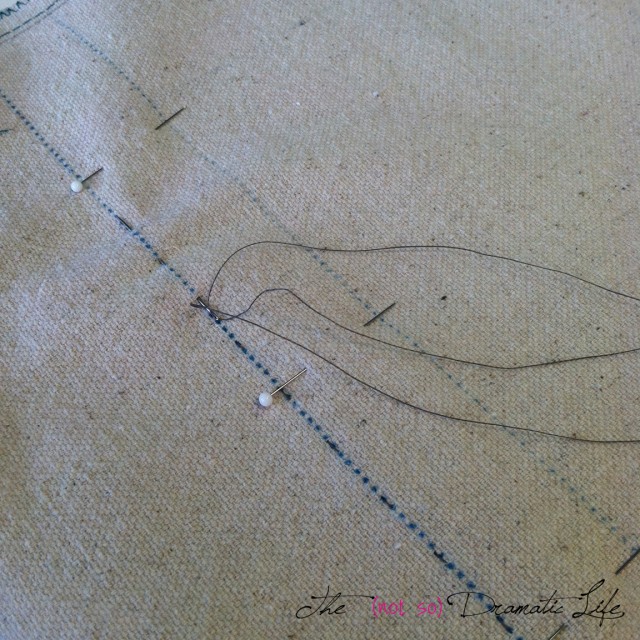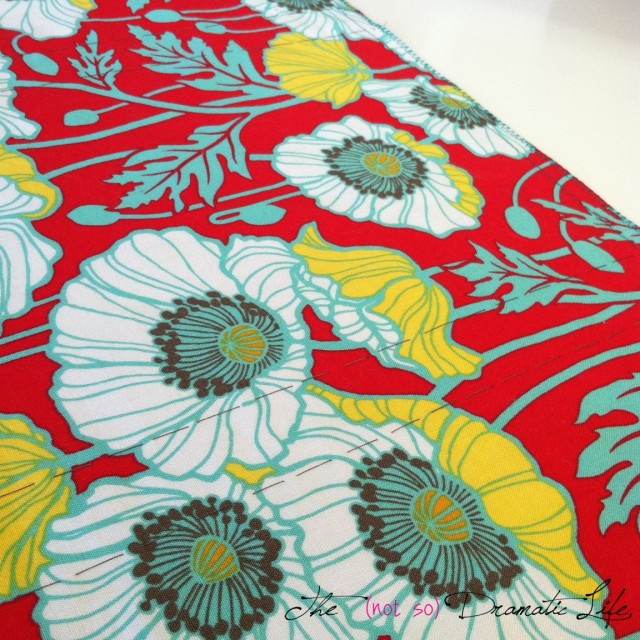Have you ever noticed that from time to time the various lines and markings that you so carefully transferred from a pattern to the back of your fabric really need to be seen on the front of the fabric? You don’t want to make a big heavy mark on the front of your fabric because it may end up being seen, so what is the solution?
Thread tracing to the rescue! Thread tracing can be done by hand or by machine, and it simply means that you will use a basting stitch to sew along the line you need to mark. These stitching lines will most likely need to be removed in the future, so you will want to make it easy to do so. Machine thread tracing should be done using a long straight stitch and no backstitching.
Hand thread tracing is the most useful when you use an uneven stitch with the longer stitch on the outside of the fabric. Removing hand stitching is usually easier if you take a small backstitch (instead of a knot) to secure the thread at the start and end of the line.
You can also use thread tracing to mark points or shorter lines including points for pocket placement or button holes. In smaller areas thread tracing is usually done by hand and may be as small as one large backstitch.



1 Comment
Tote Bag Tutorial Part 4: Assembling the Bag | The (not so) Dramatic Life
February 18, 2015 at 12:24 pm[…] Thread Tracing […]